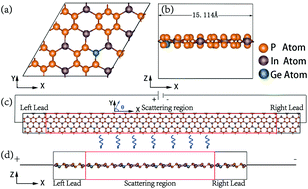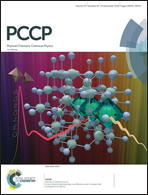Remarkable negative differential resistance and perfect spin-filtering effects of the indium triphosphide (InP3) monolayer tuned by electric and optical ways
Abstract
Fully spin-polarized current and negative differential resistance (NDR) are two important electronic transport properties for spintronic nanodevices based on two-dimensional materials. Here, we describe both the electric and optical tuning of the spin-polarized electronic transport properties of the indium triphosphide (InP3) monolayer, which is doped with Ge atoms, by using quantum transport calculations. The spin degeneration of the InP3 monolayer is lifted due to the doping of Ge atoms. By applying a small bias voltage, a fully spin-polarized current can be obtained along both the armchair and zigzag directions. Moreover, a remarkable NDR is observed for the current along the zigzag direction, which shows a huge peak-to-valley ratio of 3.1 × 103, while in the armchair direction, a lower peak-to-valley ratio of 5.5 is obtained. Alternatively, a fully spin-polarized photocurrent can also be generated under the illumination of linearly-polarized light by tuning either the photon energy or the polarization angle.



 Please wait while we load your content...
Please wait while we load your content...